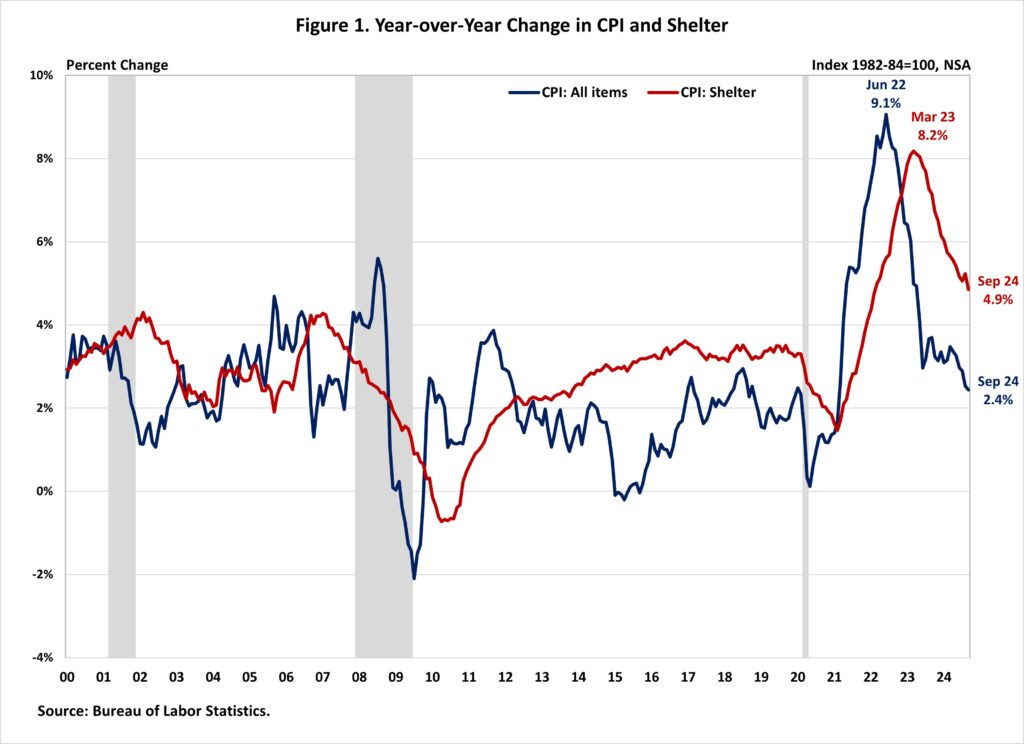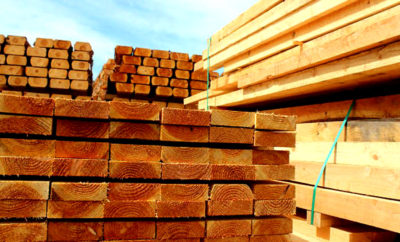
Inflation Continues to Slow in September
Inflation eased further in September, remaining at a three-year low as shelter prices moderated.
Shelter expenses, the primary driver of inflation since early 2023, saw their annual growth rate fall below 5% for the first time in February 2022.
Lower interest rates may help relieve some of the pressure on the housing market, since the Fed began its easing cycle with a half-point decrease last month.
Though shelter remains the leading driver of inflation, the Fed’s capacity to address growing housing costs is limited, as these increases are driven by a shortage of affordable supply and higher building costs.
Increased housing supply is the major solution to reducing housing inflation.
However, the Fed’s options for increasing housing supply are limited.
In effect, tight monetary policy reduces housing supply by increasing the cost of AD&C financing.
This is evident in the graph below, as shelter costs continue to climb at a rapid pace despite Fed policy tightening.
Nonetheless, with the Fed changing to a more dovish position and greater apartment supply supplemented by real-time private data, NAHB anticipates shelter costs to fall further in the coming months.

According to the Bureau of Labor Statistics, the Consumer Price Index (CPI) increased by 0.2% on a seasonally adjusted basis in September, matching the gain seen in July and August. Excluding the volatile food and energy components, the “core” CPI rose by 0.3% in September, matching the gain in August.
In September, the price index for a wide range of energy sources declined by 1.9%, with decreases in gasoline (-4.1%) and fuel oil (-6.0%) offset by rises in electricity (+0.7%) and natural gas (+0.7%). Meanwhile, the food index increased 0.4%, following a 0.1% rise in August.
The index for food away from home rose by 0.3%, while the index for food at home climbed by 0.4%.
The indexes for shelter (+0.2%) and food (+0.4%) contributed the most to the monthly increase in the all items index, accounting for more than 75% of the overall increase.
Other major contributions that increased in September include motor vehicle insurance (+1.2%), medical treatment (+0.4%), clothes (+1.1%), and airline rates (+3.2%).
Meanwhile, the main contributors that declined were recreation (-0.4%) and communication (-0.6%).
The index for shelter accounts for more than 40% of the “core” CPI. The index rose by 0.2% in September, following a 0.5% increase in August.
The indexes for owners’ equivalent rent (OER) and rent of primary residence (RPR) both rose by 0.3% this month.
These advances have been the most significant contributions to headline inflation in recent months.
On a non-seasonally adjusted basis, the CPI increased by 2.4% in September over the previous year, following a 2.5% increase in August. This was the weakest annual increase since February 2021. The “core” CPI climbed by 3.3% in the past year, following a 3.2% gain in August.
The food index increased by 2.3%, but the energy index declined by 6.8%.
The NAHB creates a “real” rent index to determine whether rent inflation is faster or slower than overall inflation.
It gives information on the availability and demand for rental homes. When rent inflation exceeds general inflation, the actual rent index increases, and vice versa.
The real rent index is determined by dividing the rental price index by the core CPI (which excludes the volatile food and energy components).
The Real Rent Index stayed steady in September, after rising by 0.1% in August. In the first nine months of 2024, the Real Rent Index’s monthly growth rate averaged 0.1%, less than the 0.2% average in 2023.
[Read more about this topic on Eyeonhousing.org]












